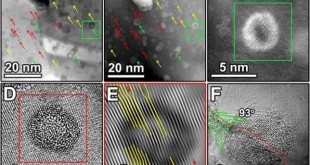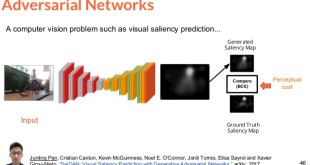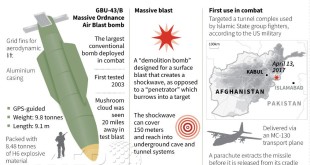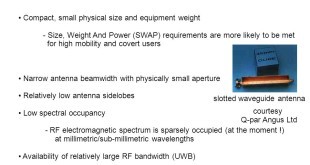Today’s generation of body-armour systems can provide protection at various levels designed to defeat most common low- and medium-energy handgun rounds. However, currently the highest-threat-level ballistic needs in the market are fulfilled by special, high performance ceramics that tend to be very costly, fragile for standard handling, extremely heavy and …
Read More »China’s Africa presence for economic, commercial and peacekeeping activities now graduating to geopolitical and military
For decades, China’s presence in Africa has largely focused on economic, commercial and peacekeeping activities. Now, Beijing is building on that by establishing greater military links to protect its national assets on the continent and gain greater geopolitical influence. The world’s second-largest economy has long described Sino-Africa cooperation as …
Read More »DARPA’s AMD to accelerate creation of novel, high-performance molecules for Military Applications
The Defense Sciences Office (DSO) at the Defense Advanced Research Projects Agency (DARPA) is soliciting innovative research proposals in the area of autonomous molecular design to accelerate the discovery, validation and optimization of new, high-performance molecules for Department of Defense (DoD) needs. DARPA Accelerated Molecular Discovery (AMD) program, aims to …
Read More »Gas turbines favorite propulsion for Warships, China makes turbine blade breakthrough for Type 055 guided-missile destroyers
Marine propulsion is the mechanism or system used to generate thrust to move a ship or boat across water. While paddles and sails are still used on some smaller boats, most modern ships are propelled by mechanical systems consisting of an electric motor or engine turning a propeller, or less …
Read More »Generative adversarial networks or dueling Neural Networks can bestow AI systems with “imagination” and also poison AI defences
Most AI advances and applications are based on a type of algorithm known as machine learning that finds and reapplies patterns in data. Deep learning, a powerful subset of machine learning, uses neural networks to find and amplify even the smallest patterns. Generative adversarial networks (GANs) are deep neural net …
Read More »Advances in Non Destructive Testing (NDT) and nondestructive evaluation (NDE) techniques for Aerospace and Military application
Non-destructive testing (NDT) is a way to detect and evaluate flaws in materials. The simplest and most accurate way of testing materials and components is often to test them to destruction. Destructive testing is used in aerospace to determine the physical properties of materials, components and assemblies. It can reveal …
Read More »Militaries employ ‘The mother of all bombs’ or MOABs for wiping out fortified ground targets and creating ‘shock and awe’
The US’s GBU-43/B Massive Ordnance Air Blast (MOAB) is a precision-guided munition weighing 21,500 pounds and was dropped from a C-130 Hercules aircraft. The MOAB isn’t the heaviest non-nuclear bomb in the US arsenal (that’s the 30,000-pound Massive Ordinance Penetrator ), but with a length of 30 feet and an …
Read More »New Magneto resistive materials enable ultrasensitive magnetic field sensors, brain-like computing chips and 3D magnetic memory
Magneto resistor is a type of resistor whose resistance changes when an external magnetic field is applied. In other words, the flow of electric current through the magneto resistor changes when an external magnetic field is applied to it. Magnetic field is the region present around a magnetic object …
Read More »Countries launch latest Man-Portable Air Defense Systems (MANPADS) which are more lethal and smart
Man-Portable Air Defense Systems (MANPADS) are surface-to-air missiles that can be carried and fired by a single individual or carried by several individuals and fired by more than one person acting as a crew. MANPADS were designed to be used by national military forces to protect their troops and facilities. With …
Read More »Rising employment of millimetre or EHF based radars, communications and seekers by Military creating new electronic warfare challenges
The advancement of Sensors, Communications and Radars have given rise to Electronic Warfare, which encompasses, in all battle phases, military actions involving the use of EM energy to determine, exploit, reduce or prevent hostile use of EM spectrum and the actions, which retain friendly use of the EM spectrum. The …
Read More » International Defense Security & Technology Your trusted Source for News, Research and Analysis
International Defense Security & Technology Your trusted Source for News, Research and Analysis









